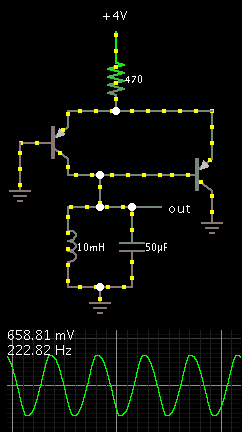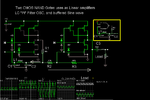ymmen
Member level 1
can i get a circuit of a bjt L-C oscillator which can actually be implemented on hardware? I tried many circuits from internet of hhartley oscillator but none of them was working.
Follow along with the video below to see how to install our site as a web app on your home screen.
Note: This feature may not be available in some browsers.
There are many of them with parts values in Google Images.can i get a circuit of a bjt L-C oscillator which can actually be implemented on hardware? I tried many circuits from internet of hhartley oscillator but none of them was working.

can i get a circuit of a bjt L-C oscillator which can actually be implemented on hardware? I tried many circuits from internet of hhartley oscillator but none of them was working.
how can this circuit work, no feedback has been provided. the oscillations will damp after few time.If you want LC and only LC...
Then there a only few I've managed to find.
See if this one suits. It is built around a long-tail pair of PNP bjt's.

can i get a circuit of a bjt L-C oscillator which can actually be implemented on hardware? I tried many circuits from internet of hhartley oscillator but none of them was working.

how can this circuit work, no feedback has been provided. the oscillations will damp after few time.